Thinking about entering the buy-to-let (BTL) market? It’s understandable if you’re unsure where to begin. Being a landlord involves managing laws, property needs, and understanding taxes. With the correct advice, you can confidently invest and get the best returns. We’re here to help you with important tips for BTL landlords.
Key Takeaways
- Understand the legal responsibilities and regulations for landlords, including property maintenance, tenant screening, and rent collection.
- Explore the tax implications of buy-to-let investments, including Stamp Duty, Income Tax, and Capital Gains Tax.
- Obtain a suitable buy-to-let mortgage and plan your finances, considering rental yield, profit margins, and unexpected expenses.
- Evaluate potential properties carefully, considering location, target tenants, and negotiation strategies.
- Stay up-to-date with the latest market trends, including rental growth, mortgage rates, and competition from build-to-rent developments.
As the BTL market changes, being flexible and well-informed is key for landlords. By sticking to these tips, you’ll navigate challenges well and succeed as a landlord. Are you ready to start your journey towards becoming a knowledgeable and successful landlord?
Understanding the Buy to Let Process
Buying a property to let is more than just the legal side. If you want to rent a property out, know the rules and duties. Following the right rules is key to a good and lawful rental.
What is Involved in Investing in a Buy to Let Property?
Buying to let needs thinking beyond just buying. Usually, you need to put down 25% to get a loan for renting out. The money you make from renting should cover 25% to 45% more than your loan repayments. Interest rates on loans for renting are usually higher than for buying to live in.
Legal Obligations and Regulations for Landlords
Being a landlord means you must follow certain rules. Make sure your property is safe, do safety checks every year, and protect any deposits your tenants give you. Breaking these rules can be a serious offence. Knowing and meeting these duties can save you from problems.
A few important duties for landlords are:
- Keep the property safe to live in.
- Do yearly checks on gas, electricity, and fire safety.
- Use an official scheme to protect and give back deposits.
- Know the correct steps for getting rent or evicting if needed.
Not doing your duties as a landlord can mean fines or worse. Knowing the law about buy-to-let property investment, legal obligations for landlords, rental property regulations, landlord legal responsibilities, property maintenance requirements, and tenant deposit handling is very important. It helps make your rental a success and keeps it lawful.

Understand the tax implications for Income Tax, Stamp Duty, Capital Gains
Buying a property to let out involves complicated tax rules for landlords. You will have to pay income tax on what you make from renting, stamp duty on the property’s purchase, and capital gains tax when you sell. These taxes are key to make sure you don’t end up owing more than you gain.
Income Tax on Rental Income
Your rental income is taxed. The tax rate is determined by how much other taxable income you have. It’s 20% for the basic rate, 40% for higher incomes, and 45% for extra-high incomes. Yet, you can lower what’s taxed by claiming back on certain expenses like mortgage interest and agent fees.
Stamp Duty for Buy-to-Let Properties
Buying a let property means dealing with stamp duty land tax (SDLT). In 2022, England and Northern Ireland’s threshold was raised to £250,000 temporarily. If you own other properties, you’ll face an additional 3% charge. The rates start at 3% for below £250,000 up to 15% for over £1.5 million.
Capital Gains Tax on Property Sales
When you sell your rental, you might owe capital gains tax (CGT). Basic rate taxpayers normally pay 18%, while those with higher incomes pay 28%. The CGT allowance was cut to £6,000 from £12,300 on 1 April 2023. Always be informed about new rates and plan for possible sales carefully.

Staying informed about tax laws is crucial for landlords looking to make the most from their investments. With a good grasp of the tax implications, making smart choices and having solid financial plans for your property is easier.
Obtaining a Buy to Let Mortgage
If you’re looking to invest in a buy-to-let property, getting the right mortgage is key. These mortgages are different from home loans. They have special rules and conditions. Getting an agreement in principle from a mortgage provider is an important early step.
Getting an Agreement in Principle
A mortgage in principle is a pre-approval for a buy-to-let loan. You can get this before choosing a property. It has several benefits:
- Shows sellers you’re a serious, pre-approved buyer, giving you an edge.
- Tells you the max you can borrow. This helps plan your search.
- Gives a preview of interest rates and terms, aiding in your investment plans.
Tell your lender if you’re buying for letting. Using a regular mortgage for this purpose breaks the rules. It could lead to your lender taking back the property.
| Factors Influencing Buy-to-Let Mortgages | Explanation |
|---|---|
| Rental Income | Mortgage decisions often hinge on future rent, with a set minimum coverage needed for most lenders. |
| Loan-to-Value (LTV) | Buy-to-let loans usually have a lower max LTV than residentials, often 75% or 80%. |
| Interest Rates | Buy-to-let loan rates are a bit higher due to the extra risk for the lender. |
| Deposit Requirements | They often require a bigger deposit, about 25% of the property’s value. |
Securing an agreement in principle is vital when applying for a buy-to-let mortgage. It lets you know how much you can borrow and shows sellers you’re serious. Understanding these mortgages’ needs helps you through the process. It aids in making wise investment choices.
Assessing Affordability and Financial Considerations
Thinking about a buy-to-let property? First, look at your money. Calculate the return on rent and profit. Make sure you can afford it. You’ll need to pay for fixing things and times when the house is empty. Keep money for emergencies, like not getting rent for a few months. It’s all about checking the details. This way, your investment can work well for you.
Calculating Rental Yield and Profit Margins
It’s key to figure out how much money a property can make. This is the rental yield. To work it out, divide the yearly rent by the price you paid. It shows if the investment is worth it. Look at the profit too. Take all costs and gains into account. This helps see the full picture of your investment’s success.
To get the most from your buy-to-let, it’s smart to:
- Conduct thorough market research to understand rental demand and potential rental income in the area
- Consult with buy-to-let mortgage brokers to explore the best financing options and understand the lending criteria
- Set aside a contingency fund equivalent to at least 6 months’ rental income to cover unexpected expenses
- Implement budgeting strategies to manage landlord expenses, such as maintenance, repairs, and void periods
- Consider purchasing the property through a limited company structure to potentially benefit from additional borrowing and tax advantages
By carefully checking your money and plans, you can wisely invest in a buy-to-let. This increases your chances of making a good income from your property.
Add all the costs including landlord insurance
Thinking about a buy-to-let (BTL) property? Remember, you’ve got to add up all costs. Landlord insurance is key. It covers property damage, liability, and income from rent.
Remember, there are more costs besides insurance. You’ll need to pay for keeping the property up, advertising empty spaces, and times when you’re not getting rent. Planning for these expenses helps you understand the true financial commitment of managing a BTL property.
If you’re getting a standard mortgage, you might need special permission to rent it out. A buy-to-let mortgage could have higher interest rates. Plus, if you’re going to use a letting agent, adding their fees to your calculations is wise.
It’s crucial to know what rent to charge. Look at local rent prices on sites like Rightmove, OnTheMarket, and Zoopla. This way, you’ll make sure your prices are fair and in line with what others charge.
If your property has five or more tenants from different households sharing facilities, you might need special licensing. You must get an EPC inspection and meet a minimum energy rating.
Remember, you must check gas safety every year and have electrical checks every five years. Make sure to keep up with maintenance within 28 days. Also, keep your property safe with alarms and fire-resistant furniture as the law states.
Don’t forget to get comprehensive insurance. This should cover missed rent and urgent repairs like leaks. Also, check your potential tenants have the right paperwork, such as IDs and proof of income. Do credit checks if you feel it’s necessary.
The rent you make is considered income by HMRC, and you’ll need to pay tax on it. Landlords also need to put the tenant’s deposit in a protection scheme. Before a tenant moves in, document the property’s state with photos to manage and justify any deductions later on.
Heading into the BTL property world? Be sure to include all costs in your plan. This covers not just insurance but maintenance, legal duties, and more. Taking the time to research and plan can really pay off for landlords.
Evaluating Potential Properties
Looking for a buy-to-let that makes money is key. You must check all aspects of the property. This means knowing who owns it, what tenants must do, and what you’re buying. It can be tricky, but it’s worth it to avoid big errors later on.
Checking Ownership and Property Details
Before you make an offer, look into who owns the property. Make sure the seller can legally sell it to you. Also, make sure there are no big issues affecting the purchase. Check the property’s size, age, and condition too. This includes what comes with it, like furniture and warranties.
Considering Existing Tenancies and Obligations
If there are tenants, study their rental agreement closely. Know what they can expect and what you must do as the new landlord. It’s wise to get legal advice. That way, you know you’re following all laws when the property changes hands.
| Consideration | Importance |
|---|---|
| Evaluating buy-to-let properties | Critical to identify suitable investments |
| Property ownership checks | Ensures a clear title and no outstanding issues |
| Existing tenancy obligations | Vital to understand current tenants’ rights |
| Legal considerations for taking over tenanted properties | Protects you as the new landlord |
Thoroughly looking at potential buy-to-let buys helps a lot. It allows you to make a smart choice and lowers the risk of problems later. Getting expert advice can make the process smoother. It can lead to a better investment too.
Knowing Your Target Market
When you invest in a buy-to-let property, you must know your target tenants well. This means thinking about where the property is and what it can offer. To do this, think about the area it’s in, the type of space it offers, and how much rent you can charge. This way, you make the property fit the needs of your target market. This will help you find tenants who stay for a long time.
To figure out who your target tenant is, you need to think about some key points.
- Location: Look at whether the property is close to schools, universities, or good transport links. These things matter to families, students, or young people starting their careers.
- Property Type: Ask if the property would suit families, young professionals, or students. It must have the right size, layout, and features for your audience.
- Rental Income: Consider how much you can charge in rent. This decides if the place is attractive to the right renters and if it’s a good investment for you.
Understanding your target tenants really well helps you pick the right property. You can also choose the features that will draw your ideal tenants to it. This can increase how often you rent it out, its income, and the success of your investment.
| Tenant Type | Key Considerations | Ideal Property Features |
|---|---|---|
| Families |
|
|
| Young Professionals |
|
|
| Students |
|
|
Negotiating the Right Price
Buying a buy-to-let (BTL) property means focusing on the rental potential rather than getting attached emotionally. As an investor, be ready to negotiate firmly. You’re quick to move because you’re not in a property chain. Think about the property’s time on the market and why the seller wants to sell. This can help you get a better price.
Strategies for Negotiating a Fair Deal
To get a fair deal on a BTL property, try these tactics:
- Research the local market: Look at what similar properties sold for. This helps ensure you offer a competitive price.
- Leverage the seller’s motivation: Figuring out why the seller wants to move can give you an edge in negotiations. Maybe they need to sell quickly, for instance.
- Start with a lower offer: Bidding lower than the asking price is normal. Aim for 20-25% below the price. This begins the negotiation.
- Focus on the numbers: Keep your emotions out of it. Concentrate on how the property can make profit. This helps in sticking to your budget.
- Be prepared to walk away: If the seller won’t meet you at a fair price, you might need to leave the deal. Sometimes, this makes them rethink their position.
Staying strategic and sticking to the facts is crucial in BTL negotiations. These approaches boost your chances of getting a good deal.
Strategies for Negotiating a Fair Deal
Here are more tactics for negotiating on a BTL:
- Establish a deadline: Give the seller a date to respond by. It can hurry the decision-making process and help you reach a deal faster.
- Offer non-monetary value: Sometimes, things like a nice gift or a helpful contact can work in your favour during negotiations.
- Use precise pricing: Instead of round numbers, use specific prices like £167,850. It shows you’re serious and have thought things through.
- Build rapport with the seller: A good relationship with the seller or their agent can make negotiations smoother. It helps you understand what they need too.
By using these strategies together, you improve your chances of getting a fair price on the investment. This can lead to better returns later on.
Top Tips for Landlords : Buy to let Advice
Thinking about investing in buy-to-let? It’s important to tread carefully. These tips can aid your journey as a landlord:
- Understand the Tax Implications: Know your tax duties. For buy-to-let properties in England, Wales, and Northern Ireland, expect a 3% stamp duty. In Scotland, it’s 4%. Also, learn about changes in income tax deductions for mortgage interest. Properties held by companies face a 19% corporation tax.
- Secure the Right Mortgage: To secure funding, you might need a deposit from 15% to 30% of the property’s value. Lenders often look for rent that’s at least 125% of the monthly mortgage cost. It could be wise to refinance your home first to get better mortgage terms.
- Assess Affordability and Rental Yield: Calculate your rental income and costs carefully. Consider maintenance, insurance, and agent fees. Aiming for a rental yield above 7% is a good target for a nice return.
- Evaluate Potential Properties: Look at the location, type of property, and current tenancies. Consider purchasing properties that need work. If the value can go up by at least 20% after renovation, it’s a good deal.
- Know Your Target Market: Learn about the demand in your area. This helps you meet the needs of potential tenants. Offering essential appliances and keeping the property in top condition is key.
- Negotiate Effectively: Use your knowledge to negotiate a good price. If the deal doesn’t fit your plan, be ready to walk away. Negotiation skills are crucial in this business.
These guidelines can help you thrive as a buy-to-let landlord. They’ll also boost the value of your property investment.
To succeed, keep up with rental trends and laws. This knowledge will make your investment more profitable and sustainable. Best of luck on your property venture!
Conclusion
Thinking about a buy-to-let property needs careful thought and planning. You need to know about the law and taxes, check if you can afford it, and get the right price. Doing your homework, choosing who you want to rent to, and planning your budget can make investing smarter and more profitable.
It’s wise to get advice from experts when entering the buy-to-let market. Over time, this type of investment can give a good return in the UK. Remember, as a landlord, it’s crucial to be fully aware of the steps involved, the tax, and to make sure it’s worth the money.
Think hard about the tips in this article on buy-to-let. Make choices that fit your long-term goals and stay informed on current trends and laws. With the right approach and by keeping updated, your buy-to-let journey can bring in steady rent and increase in value over the years.




